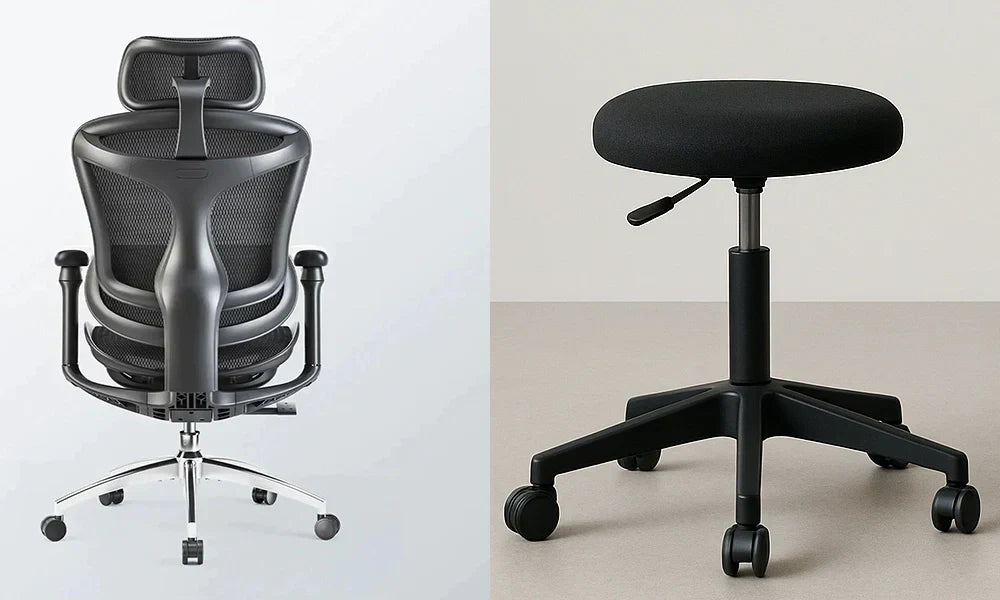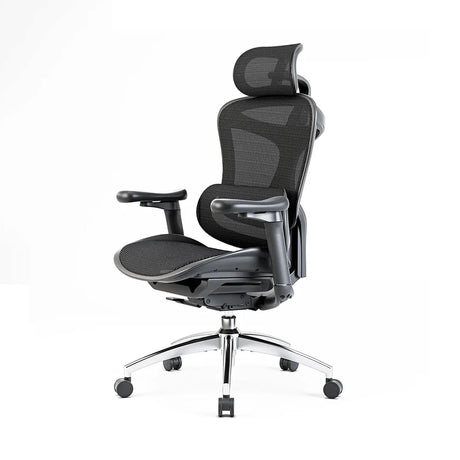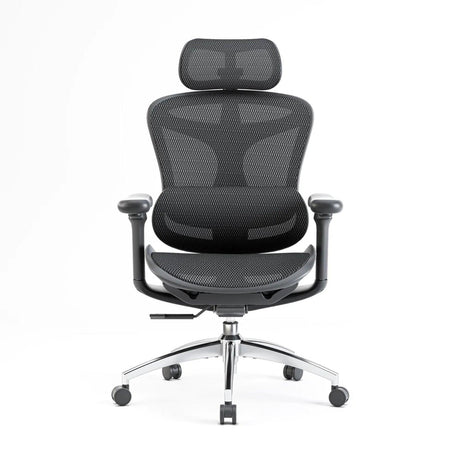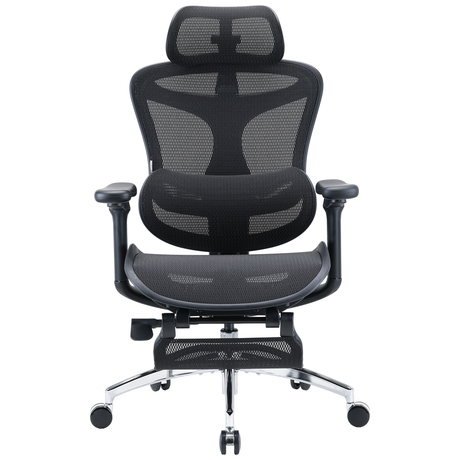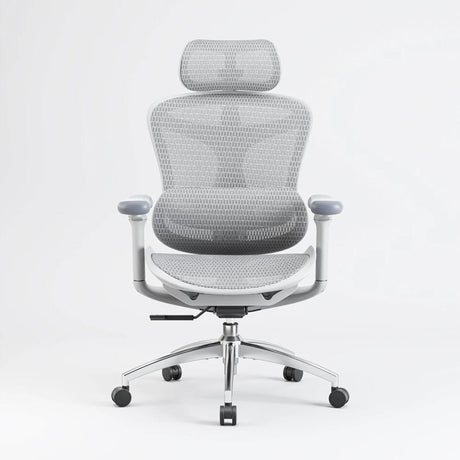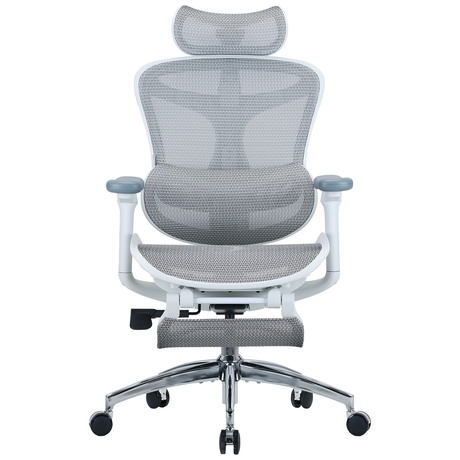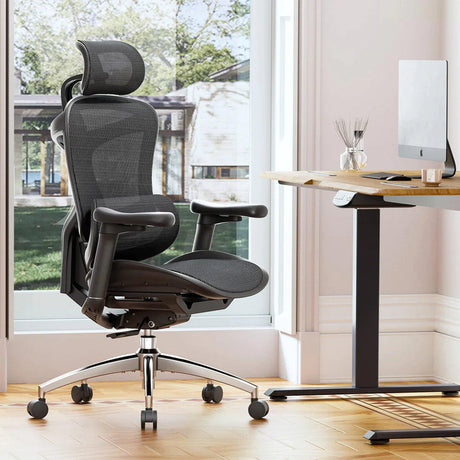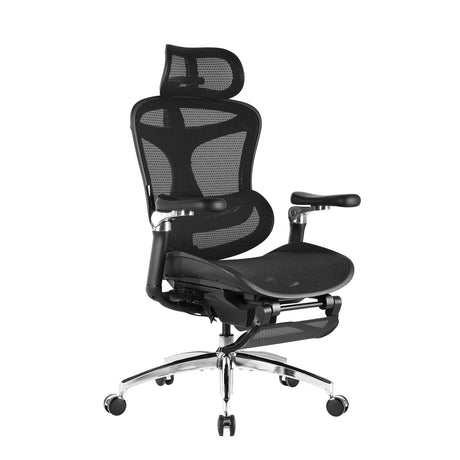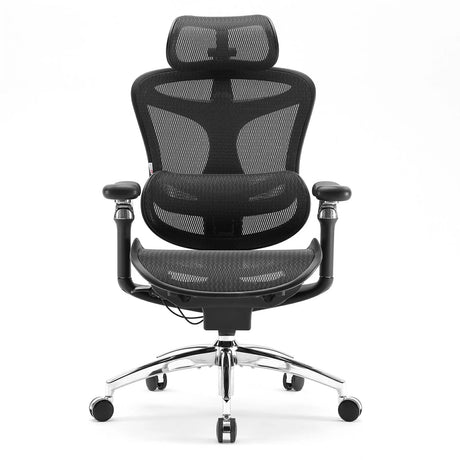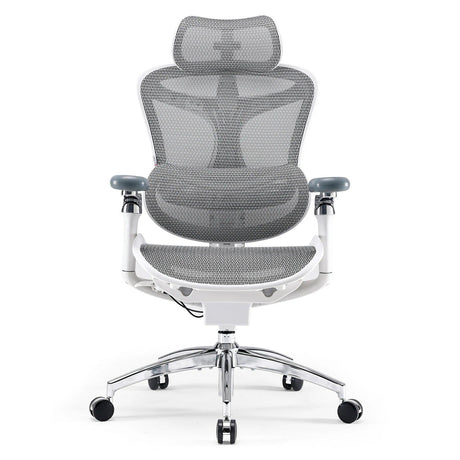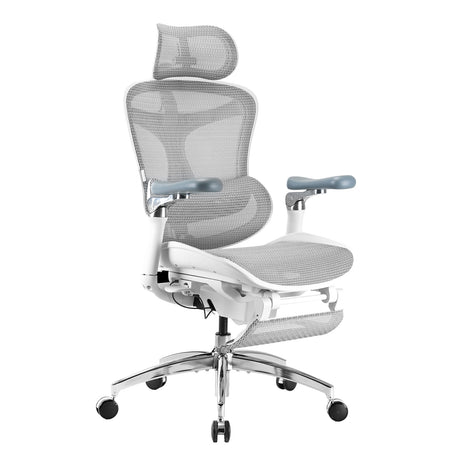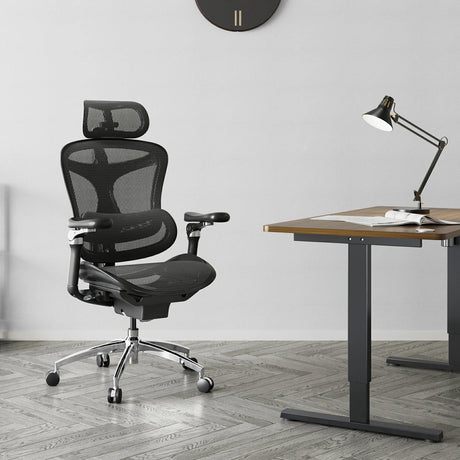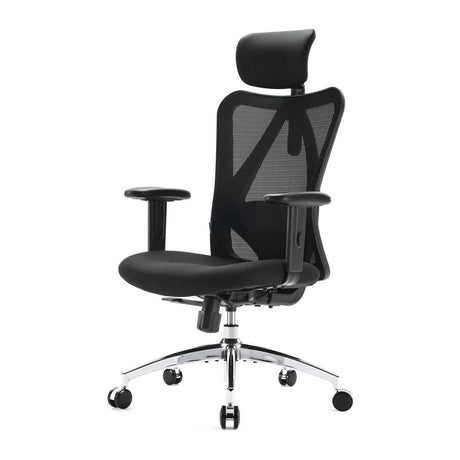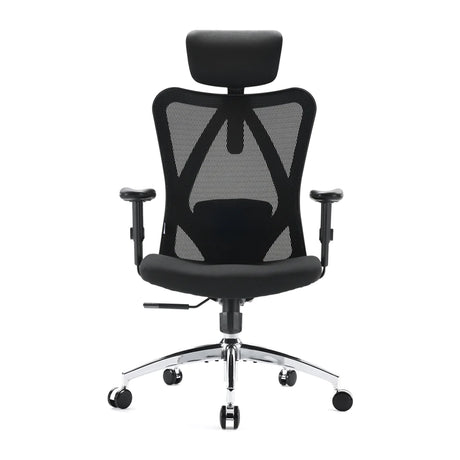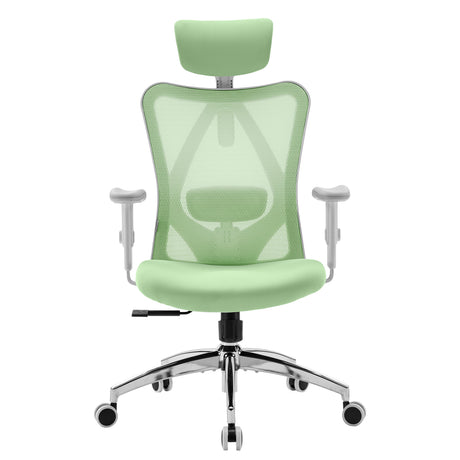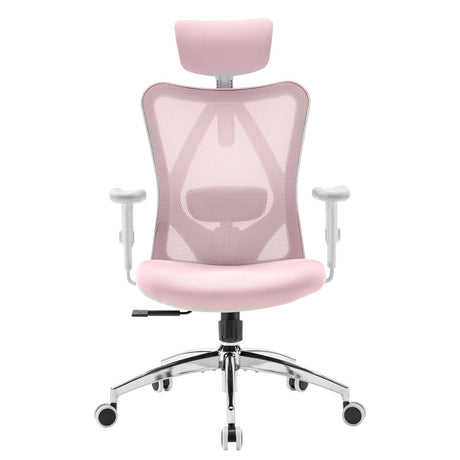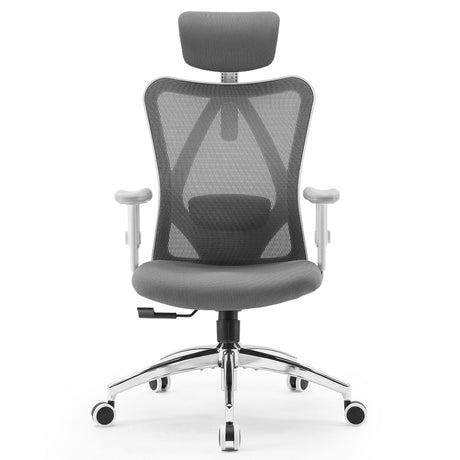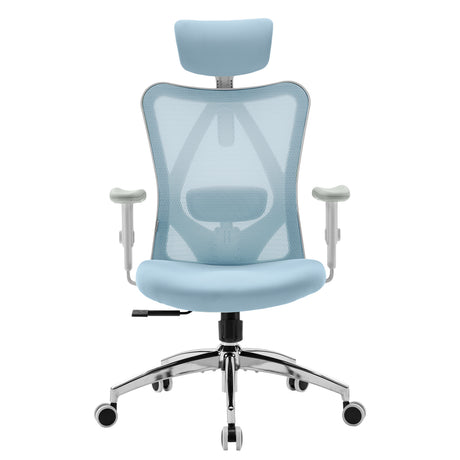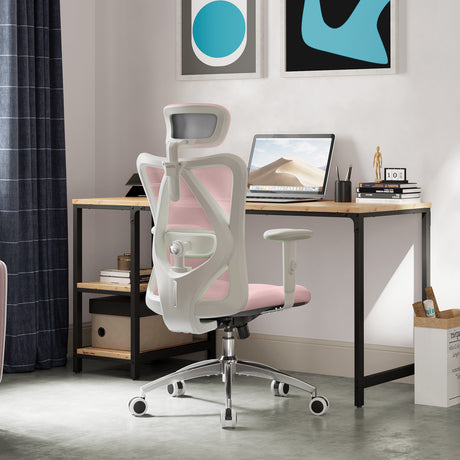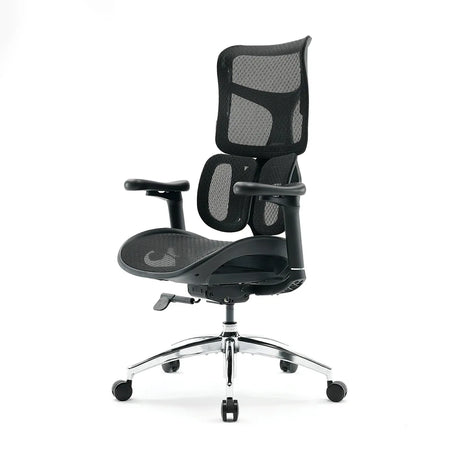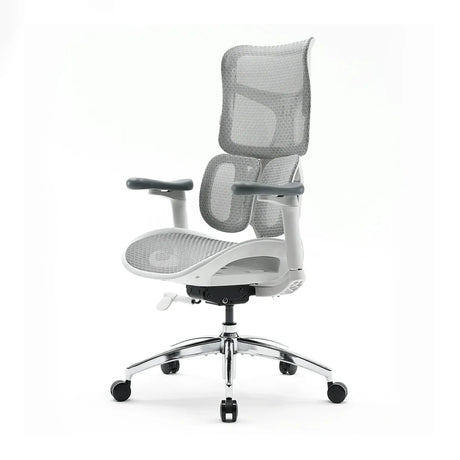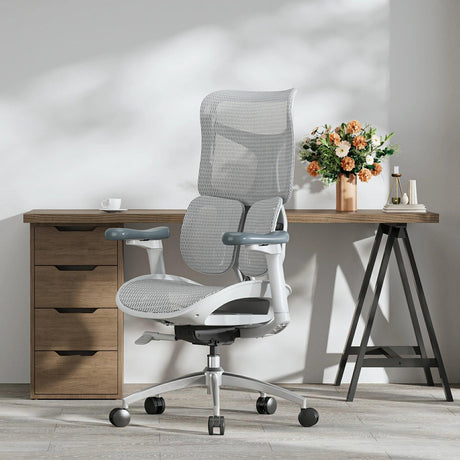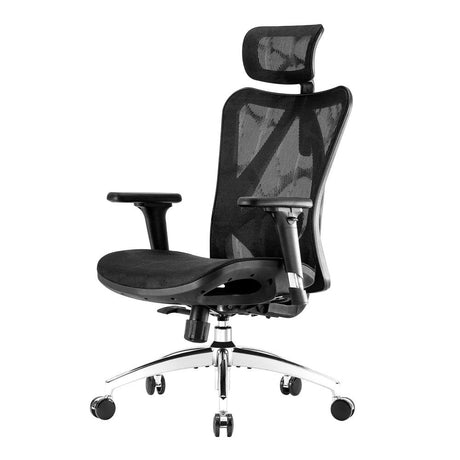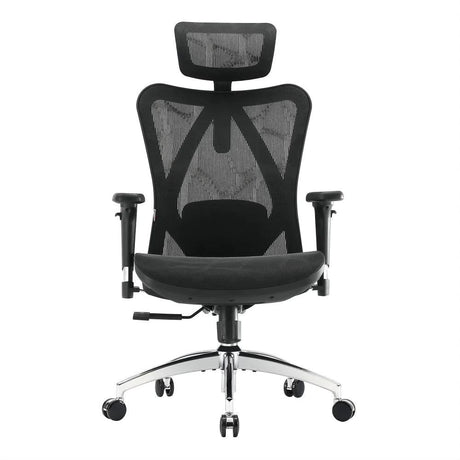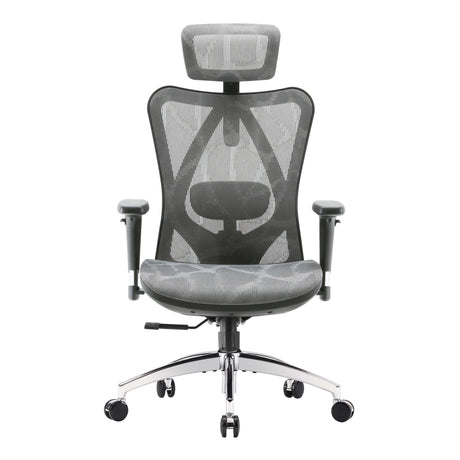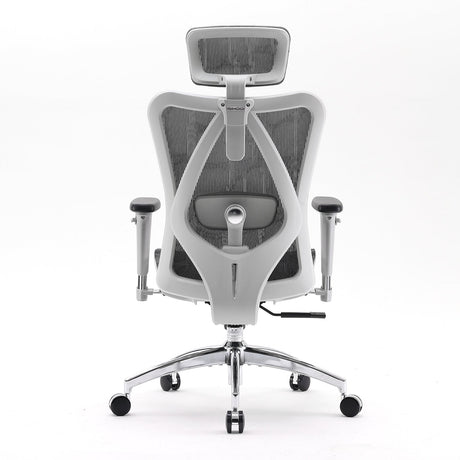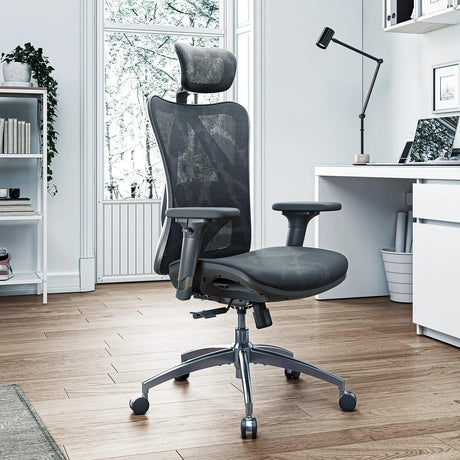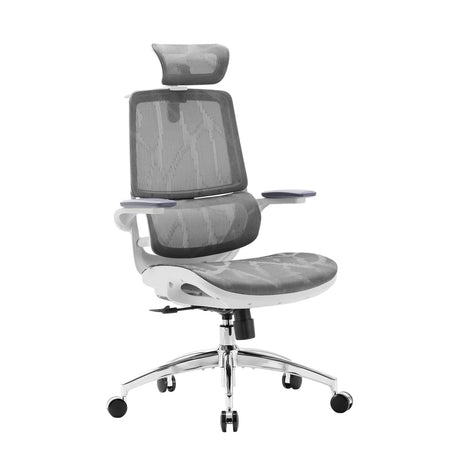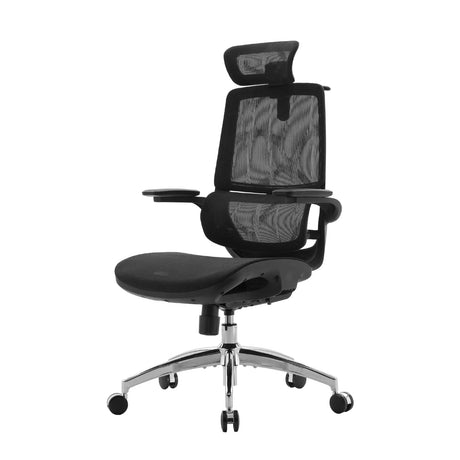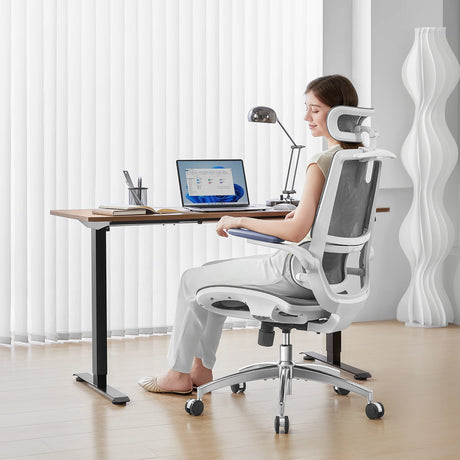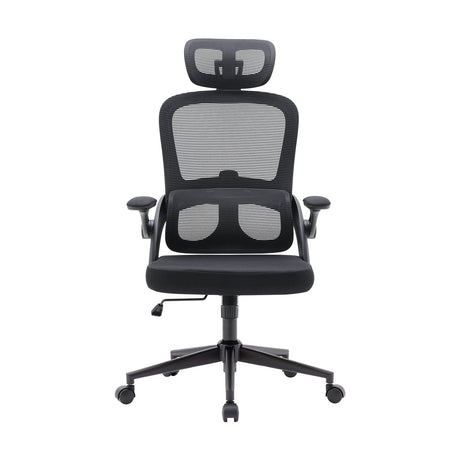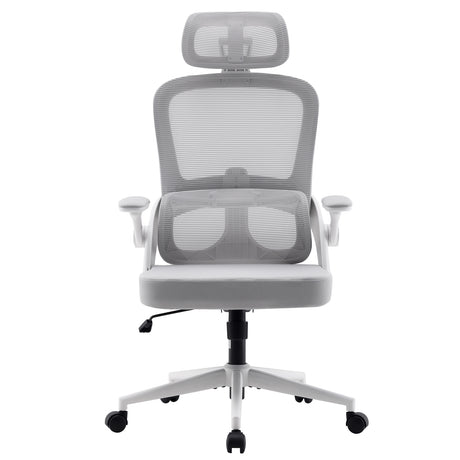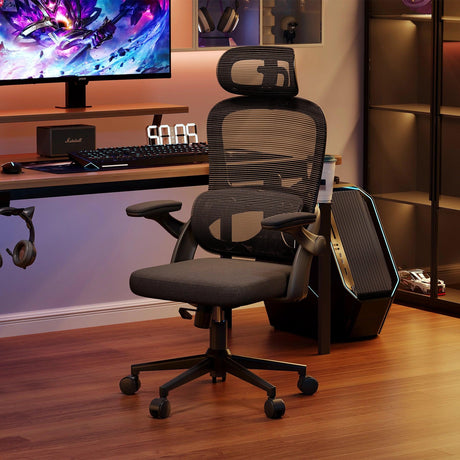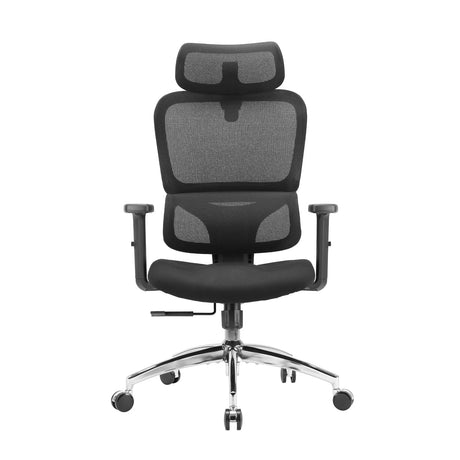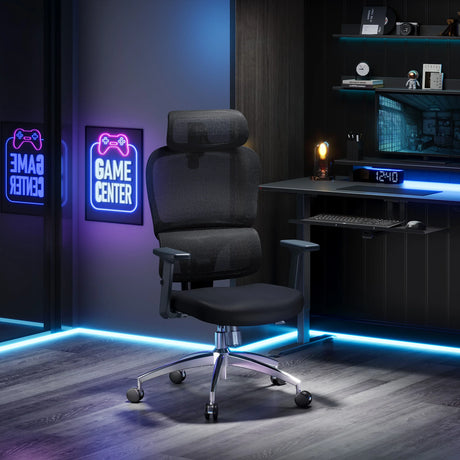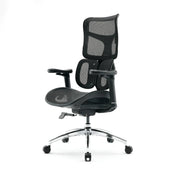Sitting is something we do every day—at work, at home, while eating, driving, or even relaxing. Yet, many people find that sitting for extended periods without any form of back support quickly becomes uncomfortable or even painful. Whether you’ve tried sitting on a hard stool, a bench, or even the floor without leaning against something, you’ll notice an ache creeping into your back, hips, or shoulders. But why exactly does it hurt to sit without back support, and what can you do about it?
In this post, we’ll take a deep dive into the science of sitting, the mechanics of the human spine, why back support is essential, and how the right ergonomic chair—like the Sihoo Doro C300—can transform your sitting experience.
1. The Anatomy of Sitting
To understand why sitting without back support can hurt, we first need to look at how the spine is designed. The human spine has three natural curves:
- Cervical curve (neck)
- Thoracic curve (upper back)
- Lumbar curve (lower back)
These curves act like shock absorbers, distributing stress and keeping the body balanced whether we’re standing or moving. When you sit upright without support, your spine has to work harder to maintain those natural curves.
Your muscles—especially the erector spinae, multifidus, and core muscles—must stay constantly engaged to keep you upright. Over time, this continuous effort causes muscle fatigue. When your muscles tire, your posture collapses, leading to slouching, rounded shoulders, and pressure on spinal discs.
2. Why Sitting Without Back Support Hurts
2.1 Muscle Fatigue
When you sit without leaning back, your postural muscles are doing all the heavy lifting. At first, you might feel fine, but after 15–30 minutes, you start noticing stiffness. That’s because those muscles weren’t designed for hours of static holding—they were built for movement.
2.2 Increased Pressure on the Spine
When you don’t have back support, you’re more likely to slump forward. This shifts pressure onto the intervertebral discs, particularly in the lumbar region. Over time, this increases the risk of disc degeneration, herniation, or chronic back pain.
2.3 Poor Circulation
Unsupported sitting often leads to poor posture, which can compress blood vessels and nerves. This explains why you may feel tingling, numbness, or heaviness in your legs when sitting on a backless chair or bench.
2.4 Strain on the Neck and Shoulders
Without back support, your upper spine may curve forward, causing your head to protrude. This places extra strain on the neck and shoulders, often leading to tension headaches or stiffness.
2.5 Psychological Discomfort
Pain isn’t always physical. Constant discomfort from unsupported sitting can also affect your focus, productivity, and overall well-being. You may find yourself distracted, fidgeting, or unable to concentrate because of the nagging ache in your back.
3. Sitting Without Back Support: Short-Term vs. Long-Term Effects
- Short-term effects: Fatigue, stiffness, loss of concentration, temporary pain in the lower back or upper back.
- Long-term effects: Chronic back pain, spinal misalignment, increased risk of musculoskeletal disorders (MSDs), reduced mobility, and even changes in breathing efficiency due to poor posture.
It’s not just about comfort—it’s about protecting your long-term health.
4. Why Humans Aren’t Designed to Sit Long Without Support
From an evolutionary perspective, our bodies were made for movement—walking, standing, squatting—not sitting for hours. Chairs with backrests are relatively modern inventions, but they’ve become essential in modern work and study environments.
When we force ourselves to sit backless, we’re essentially fighting against millions of years of biomechanics designed for mobility. While some cultures traditionally sit cross-legged on the ground, these positions involve dynamic postures that engage different muscle groups—not rigid, chair-bound sitting without support.
5. Common Places We Experience Sitting Without Back Support
- Work environments: Stools at counters or drafting tables.
- Schools: Hard benches or poorly designed chairs.
- Public spaces: Park benches, bleachers, waiting areas.
- Home: Sitting on the floor, edge of the bed, or dining chairs without ergonomic design.
Every one of these scenarios can cause discomfort if prolonged.
6. How Back Support Makes a Difference
6.1 Maintains Natural Spinal Curves
A proper backrest supports the lumbar curve, preventing slouching and disc pressure.
6.2 Reduces Muscle Fatigue
With a supportive backrest, muscles don’t have to remain in constant tension, allowing them to relax.
6.3 Promotes Circulation
Proper posture ensures blood and oxygen flow freely throughout your body.
6.4 Improves Focus and Productivity
Comfort translates to fewer distractions, more energy, and better performance at work or study.
6.5 Prevents Long-Term Damage
A good chair with ergonomic back support helps maintain spinal health for years to come.
7. The Role of Ergonomic Chairs
Not all chairs are created equal. Traditional chairs may have a backrest, but if it’s not designed ergonomically, it may not actually support your spine where you need it most. That’s where ergonomic chairs step in.
Ergonomic chairs are designed with human anatomy in mind. They follow the natural contours of the spine, offering dynamic lumbar support, adjustable features, and breathable materials to promote comfort during long sitting sessions.
8. Why the Sihoo Doro C300 is the Ideal Solution
If sitting without back support is hurting you, the solution isn’t to simply avoid sitting—it’s to sit smarter. The Sihoo Doro C300 ergonomic chair is a standout choice because it directly addresses the issues caused by unsupported sitting.
Key Features:
-
Self-Adaptive Lumbar Support
Unlike static chairs, the Sihoo Doro C300 adjusts as you move, keeping your lower back supported at all times. -
Flexible Backrest
Its backrest is engineered to mimic the spine’s natural movement, helping you maintain posture without strain. -
4D Coordinated Armrests
Support isn’t just for your back. The armrests move in four directions, reducing shoulder and neck strain. -
Smart Weight-Sensing Chassis
The chair adapts to your weight and sitting position, giving you a personalized experience every time you sit. -
Waterfall-Shaped Seat
Designed to reduce pressure on the thighs, improving blood circulation and reducing numbness.
Why It’s Better than a Regular Chair:
- Keeps you from slouching.
- Reduces back pain over long sitting sessions.
- Encourages natural spinal alignment.
- Designed for comfort whether you’re working, gaming, or studying.
The Sihoo Doro C300 is not just a chair—it’s a tool for protecting your spine, enhancing comfort, and boosting productivity.
Sihoo Doro C300 Office Chair
9. Practical Tips to Reduce Pain While Sitting
Even with the best ergonomic chair, habits matter. Here are some tips to minimize pain from sitting:
- Take regular breaks – Stand up, stretch, or walk around every 30–60 minutes.
- Adjust your chair properly – Ensure your feet are flat on the floor, knees at 90 degrees, and your back against the backrest.
- Use lumbar support – If your chair doesn’t have one, add a small cushion or ergonomic pillow.
- Strengthen your core – Exercises like planks or bridges can help support your spine naturally.
- Mind your screen height – Keep your monitor at eye level to avoid leaning forward.
10. Final Thoughts
Sitting without back support hurts because our bodies aren’t designed for it. The constant strain on muscles, pressure on the spine, and poor circulation all add up to discomfort and long-term health risks. The solution isn’t to stop sitting—it’s to sit with support.
Investing in an ergonomic chair like the Sihoo Doro C300 ensures that your back is properly supported, your posture is maintained, and your comfort is maximized. In the modern world where sitting is unavoidable, this investment in your health and well-being is not just beneficial—it’s essential.
